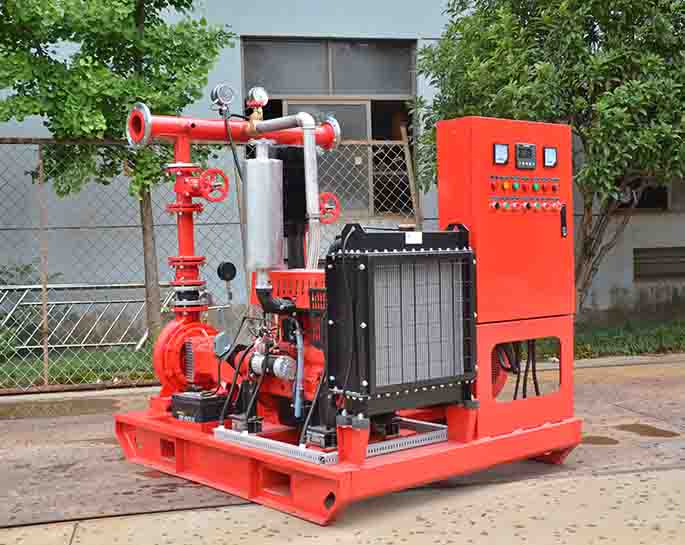Why does the fire pump consume more power during use?
Apr 07, 2023
Share:
Fire pumps are an essential component of fire protection systems. They are used to supply pressurized water to sprinkler systems, fire hoses, and other firefighting equipment. Fire pumps must be capable of supplying large volumes of water at high pressures. This requires a significant amount of power, which is why fire pumps consume more power during use.
The main reason why fire pumps require more power during use is because they must work harder to overcome the pressure of the water they are pumping. When the pump is idle, the pressure in the system is lower and the pump does not need to work as hard. When the pump is in use, however, the pressure in the system increases and the pump must work harder to maintain the desired pressure. This requires more power, which is why fire pumps consume more power during use.
Another factor that contributes to increased power consumption is friction. When the pump is running, the moving parts create friction, which causes the pump to work harder and consume more power. The friction is created by the force of the water against the internal parts of the pump. The more water the pump is pushing, the more friction is created, and the more power is required to overcome it.
The power required by a fire pump also depends on its size and type. Smaller pumps require less power than larger pumps. This is because small pumps are not able to push as much water as larger pumps, and thus require less power. The type of pump also affects the power consumption. Centrifugal pumps require more power than piston pumps, for example.
In conclusion, fire pumps consume more power during use because they must work harder to overcome the pressure of the water they are pumping, and friction is created by the force of the water against the internal parts of the pump. The size and type of the pump also affects the power consumption. It is important to choose a fire pump that is appropriately sized and designed for the application to ensure efficient power usage.

The main reason why fire pumps require more power during use is because they must work harder to overcome the pressure of the water they are pumping. When the pump is idle, the pressure in the system is lower and the pump does not need to work as hard. When the pump is in use, however, the pressure in the system increases and the pump must work harder to maintain the desired pressure. This requires more power, which is why fire pumps consume more power during use.
Another factor that contributes to increased power consumption is friction. When the pump is running, the moving parts create friction, which causes the pump to work harder and consume more power. The friction is created by the force of the water against the internal parts of the pump. The more water the pump is pushing, the more friction is created, and the more power is required to overcome it.
The power required by a fire pump also depends on its size and type. Smaller pumps require less power than larger pumps. This is because small pumps are not able to push as much water as larger pumps, and thus require less power. The type of pump also affects the power consumption. Centrifugal pumps require more power than piston pumps, for example.
In conclusion, fire pumps consume more power during use because they must work harder to overcome the pressure of the water they are pumping, and friction is created by the force of the water against the internal parts of the pump. The size and type of the pump also affects the power consumption. It is important to choose a fire pump that is appropriately sized and designed for the application to ensure efficient power usage.


.png)
.png)

.png)


